
A screencast lesson explaining how to write citations within a text using APA formatting. [5:09]
- Subject:
- Arts
- English Language Arts
- Material Type:
- Audio/Video
- Provider:
- Sophia Learning
- Date Added:
- 12/01/2023

A screencast lesson explaining how to write citations within a text using APA formatting. [5:09]

Use this comprehensive resource to learn about APA style. Students and teachers can use this site as a springboard for any questions they may have concerning APA Style.

This site offers a general overview of several citation styles for research papers, including AMA, MLA and APA. Includes examples and subjects which most commonly use each style.

An excellent tip sheet on how to document sources while writing and creating a research paper. Includes in-depth information and examples.

This resource contains the basic citation information for articles from journals, articles from books, articles from databases, books, newspapers, government publications, and web sites. Students can click on one of theses publications and sample citations will appear in MLA (Modern Language Association), APA (American Pstchological Association), Chicgo Manual of Style, and Turabian format.
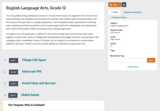
The 12th grade learning experience consists of 7 mostly month-long units aligned to the Common Core State Standards, with available course material for teachers and students easily accessible online. Over the course of the year there is a steady progression in text complexity levels, sophistication of writing tasks, speaking and listening activities, and increased opportunities for independent and collaborative work. Rubrics and student models accompany many writing assignments.Throughout the 12th grade year, in addition to the Common Read texts that the whole class reads together, students each select an Independent Reading book and engage with peers in group Book Talks. Language study is embedded in every 12th grade unit as students use annotation to closely review aspects of each text. Teacher resources provide additional materials to support each unit.

Who decides who among us is civilized? What rules should govern immigration into the United States? Whom should we let in? Keep out? What should we do about political refugees or children without papers? What if they would be a drain on our economy?
ACCOMPLISHMENTS
Students read William Shakespeare’s play The Tempest and write a short argument about who in the play is truly civilized.
Students participate in a mock trial in which they argue for or against granting asylum to a teenage refugee, and then they write arguments in favor of granting asylum to one refugee and against granting it to another.
Students read an Independent Reading text and write an informational essay about a global issue and how that relates to their book.
GUIDING QUESTIONS
These questions are a guide to stimulate thinking, discussion, and writing on the themes and ideas in the unit. For complete and thoughtful answers and for meaningful discussions, students must use evidence based on careful reading of the texts.
What role do national identity, custom, religion, and other locally held beliefs play in a world increasingly characterized by globalization?
How does Shakespeare’s view of human rights compare with that in the Universal Declaration of Human Rights?
Who is civilized? Who decides what civilization is or how it’s defined?
How do we behave toward and acknowledge those whose culture is different from our own?
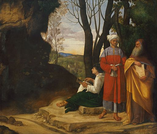
Who is free at the end of the play? In this lesson, students will share their responses to that question and their ideas about the ending of the play. Students will have class time to draft an essay about civilized behavior in The Tempest. For homework, students will complete an initial draft of their essay.
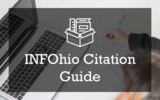
The INFOhio Citation Guide includes a variety of websites, tutorials, documents, and videos for grades 6-12 to support students as they cite sources and provide attribution for resources and images used during the research process.
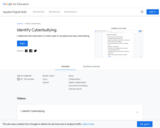
Collaborate with classmates to create a plan to recognize and stop cyberbullying. Time to complete: 45-90 minutes

A screencast lesson discussing how to write in-text citations using the MLA format. [5:28]

A great resource for putting together all of a student's possible sources onto note cards for later using in citing.

An excellent tip sheet on how to write and develop a works cited and documentation list for a research paper. Includes in-depth information and examples.

This Modern Language Association resource contains a list of frequently asked questions about MLA (Modern Language Association) format. L.9-10.3a Standard Format

Provides guidance on the ways to quote, paraphrase, and summarize information. Gives various reasons for paraphrasing, summarizing, and quoting various sources.

Extensive information on how to use the American Psychological Association (APA) format for citations. Information is provided on general format, referring to other works, reference list, notes, and examples in the APA format. W.9-10.8 Sources, L.9-10.3a Standard Format. CCSS.ELA-Literacy.WHST.6-8.8 Gather relevant information from multiple print and digital sources
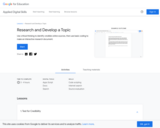
Use critical thinking to identify credible online sources, then use basic coding to make an interactive research document. Time to complete: 3-4 hours

This guide from the University of Wisconsin will help you create Chicago-style citations for source material.
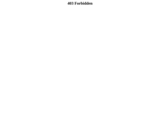
This site outlines the basics of the MLA (Modern Language Association) style of documentation and includes links to handouts about in-text citations, the works cited page, and how to cite electronic sources. Several sample citations and examples are provided throughout to help illustrate the information being presented. The information can be downloaded in PDF format. A link to the MLA website is also provided.

Through an adult-led field trip, students organized into investigation teams catalogue the incidence of plastic debris in different environments. They investigate these plastics according to their type, age, location and other characteristics that might indicate what potential they have for becoming part of the Great Pacific Garbage Patch (GPGP). Students collect qualitative and quantitative data that may be used to create a Google Earth layer as part of a separate activity that can be completed at a computer lab at school or as homework. The activity is designed as a step on the way to student's creation of their own GIS Google Earth layer. It is, however, possible for the field trip to be a useful learning experience unto itself that does not require this last GIS step.